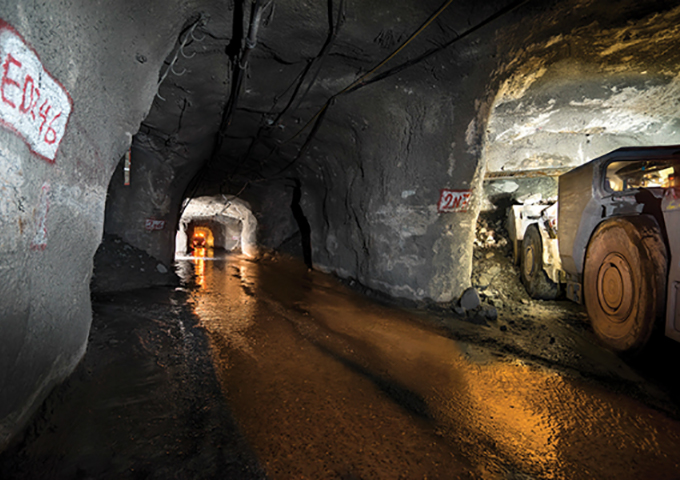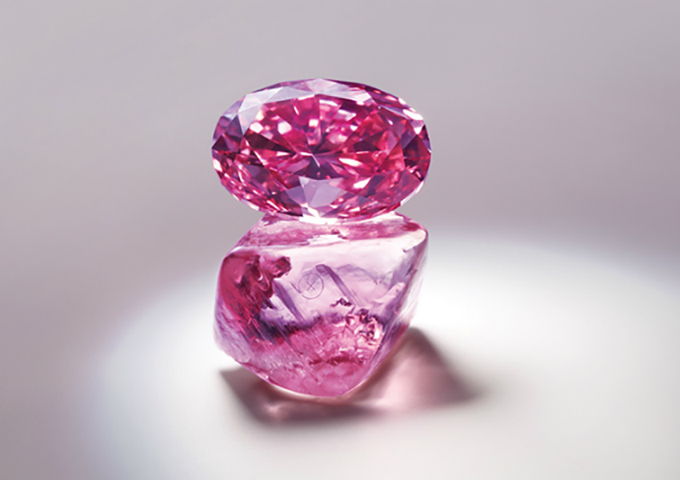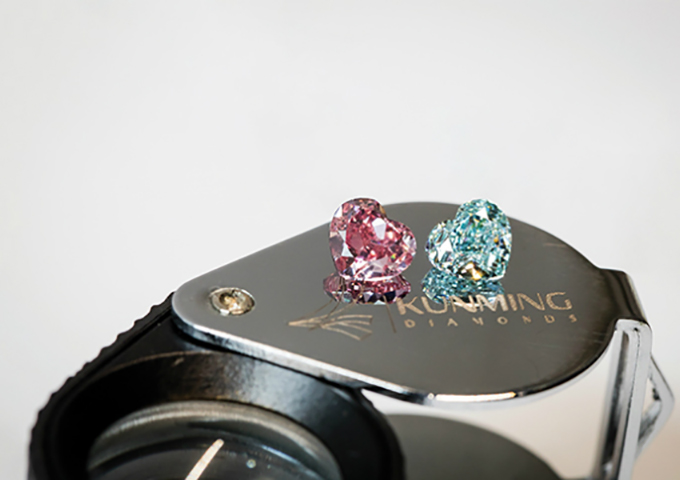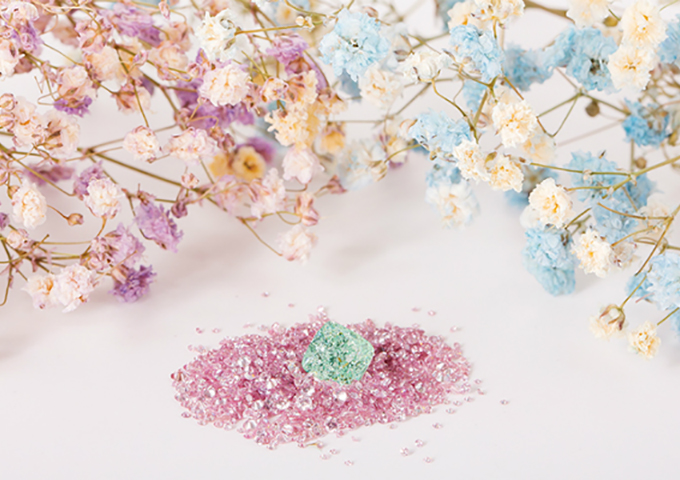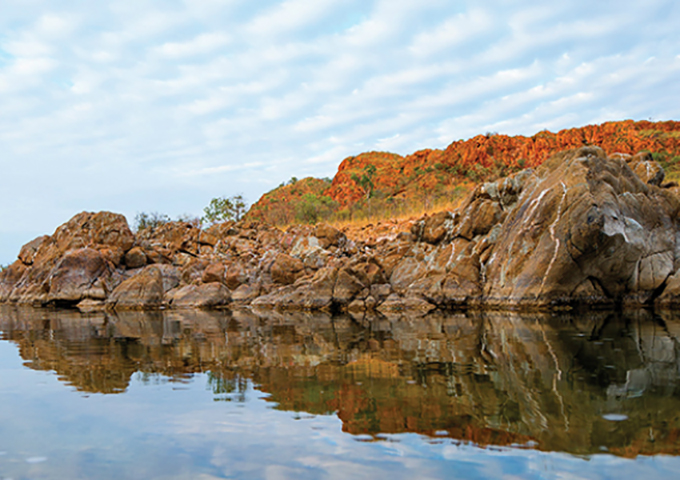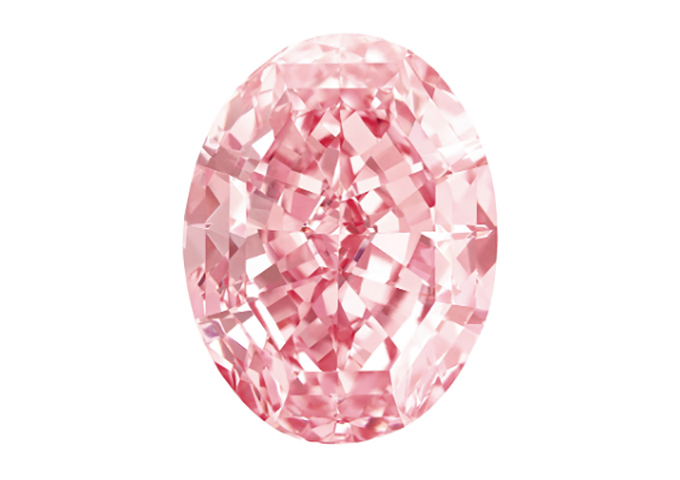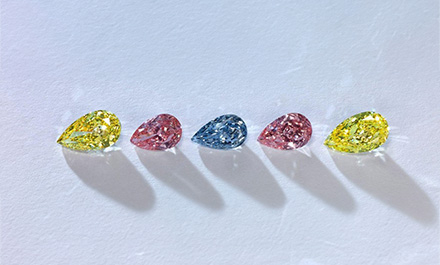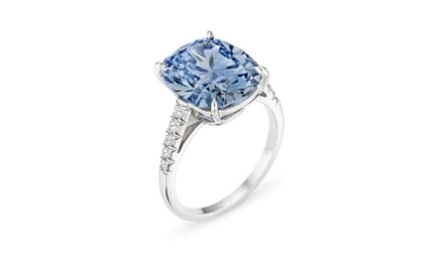Demand for pink diamonds is on the rise, leading up to the imminent closure of the legendary Argyle mine – the origin of the world’s most exquisite pink diamonds – later this year. Prices are also on the upswing, with buyers snapping up pinks in all shapes and sizes. JNA casts the spotlight on the Argyle heritage and how it forever changed the world of fine jewellery.
Nestled in a vast expanse of indigenous land in East Kimberley, Western Australia, the Argyle diamond mine stands majestic against a mesmerising natural landscape of red terrains, green flora and blue skies. While its exterior is a sight to behold, the mine is best known as a repository of the most coveted, extremely rare pink diamonds for nearly four decades.
With Argyle’s looming closure before the end of the year, fancy colour diamond and jewellery industry stakeholders are eager to sustain the momentum for pink diamonds by capitalising on the stones’ provenance and effectively marketing them as the definitive investment piece, especially in times of crisis.
According to them, the splendour of Argyle pink diamonds, which perfectly capture the ethos of modern, feminine luxury – will endure way beyond the mine’s cessation.
The Argyle pink diamond narrative
Global diamond production increased twofold after the Argyle mine, owned by Australian miner Rio Tinto, commenced operations in the mid-1980s. As one of the largest producers of natural colour diamonds, the mine has since yielded some 865 million carats of rough, bearing such hues as white, champagne, cognac, blue and violet.
Only 0.01 per cent of Argyle's total production were pink diamonds, revealed Patrick Coppens, general manager of sales and marketing at Rio Tinto. “Argyle was and still is the world’s first and only consistent source of pink diamonds, providing 90 per cent of global supply,” he added. With the mine closing in 2020 after its economically viable supply of gems has been depleted, Rio Tinto is preparing for a post-Argyle scenario that will ensure economic and environmental sustainability for the communities around the East Kimberley region.
The mine closure plan – covering safety and compliance, land use, landforms, water reserve, biodiversity, community capacity and resource development – is currently being worked out with regulators and awaiting approval, according to Coppens. Rio Tinto is also working with traditional owners and local communities to help in transitioning the workforce and regenerating the land over the next decade and beyond.
Consumers are now becoming more sentimental about owning a natural and historical treasure as the mine prepares to close its doors forever, noted the Rio Tinto official.
Structural constraints on the supply side such as a steadily diminishing mineral reserve base compounded by limited exploration success and relatively high barriers to entry will however curtail pink diamond production and further widen the supply and demand gap.
“The chances of any future mine discovery replicating the unique properties of Argyle are extremely low,” stated Coppens, adding that it would take about a decade for a mine to proceed from discovery to production should a new deposit of pink diamond-bearing ore emerge.
Market overview
Demand for pink diamonds across the board is on the upswing, with consumers buying Argyle pinks of all shapes and sizes, disclosed Harsh Maheshwari, executive director of Kunming Diamonds – a Hong Kong-based fancy colour diamond specialist recently named as an authorised partner for Argyle pink diamonds by Rio Tinto.
Over the last decade, Kunming Diamonds has successfully acquired several lots from Rio Tinto’s annual exclusive Argyle Pink Diamond Tenders. Among these was the highly sought-after EverlastingsTM collection.
This historical selection of the finest Argyle pinks consists of 64 lots of diamonds weighing 0.14 carats and below, with a total weight of 211.21 carats. The collection represents 2 per cent of the mine’s annual pink diamond production.
According to Maheshwari, pink diamonds normally come in rounds, similar to their white counterparts, even though fancy colours are ideally radiant or cushion cut to bring out the finest depth and saturation.
“A fancy cut diamond exhibits stronger saturation compared to a round brilliant cut in fancy colour diamonds. The fact that Argyle pinks are mostly polished as rounds indicates that their quality and rarity are never compromised in any way. The Argyle pink is the paragon of all gems,” he noted.
Consumer interest has always been robust. In fact, pink diamonds continue to move fast even with the Covid-19 crisis, with demand and price steadily rising, continued Maheshwari.
Retailers and collectors from four major markets, namely China, which includes Hong Kong; Japan, Australia and the US are actively buying Argyle pinks from Kunming Diamonds.
A further spike in pink diamond prices can be expected when the mine stops operating, making the pinks even more valuable. Maheshwari recounted, “Everyone is speculating that prices will climb further post-mine life. It is as if the artist has completed his collection and is retiring.”
Coppens of Rio Tinto cited a trio of factors contributing to the exponential increase in value of Argyle pink diamonds: Rarity, uniqueness and a finite supply.
Citing industry data, he said the prices of Rio Tinto’s tender diamonds have surged by more than 500 per cent since 2000.
Prices have grown progressively compared to those of white diamonds. Some medium-quality pink diamonds attract prices 20 times higher than their colourless equivalents, data from the book Rare and Collectable by Argyle Pink Diamonds of Rio Tinto showed. Argyle pink diamond tender stones have likewise outpaced major equity indices such as Dow Jones, Hang Seng and S&P. In 2018, quality-adjusted tender prices reached an all-time high, soaring 14 per cent in 2017.
With their rarity and ever-increasing value, the pinks of Argyle have also consistently found their way into buyers’ personal holdings and asset portfolios, much like fine art. In recent years, prices of signature tender stones have consistently swelled, outperforming the top 100 art market indices, data from the book further revealed.
Pink luxury
Fancy colour diamond expert LJ West New York saw solid demand for pink diamonds before the coronavirus pandemic but sales have since weakened, according to Scott West, executive vice president of the US-based company. LJ West has been an authorised partner of Argyle Pink Diamonds since the late 1980s. Today, it has one of the largest collections of Argyle pinks in the world.
These eclectic pink diamond collections figure prominently in luxury jewellery pieces under the Scott West Diamonds brand.
According to West, demand remains high but customers are wary of the pandemic. With that being said, buyers are especially drawn to strong colours in round shapes.
“There is demand for pinks worldwide. Each market however favours certain characteristics,” he continued. US buyers, for instance, are on the lookout for the stone’s overall appeal and reputation while Asian customers generally favour vivid colours and clarity grades. The Australian market, for its part, is partial to higher-grade Argyle diamonds backed by proof of origin.
The rise in popularity of fancy colour diamonds, pinks in particular, completely changed the luxury jewellery landscape. According to West, Argyle spurred fancy colour diamonds’ now unbreakable association with collectable jewellery.
Since it began operations, the mine was extremely instrumental in building keen consumer awareness of pink diamonds and their accumulating value so much so that rare fancy colour diamonds have raised the bar for jewellery as an investment asset, he remarked.
West further commented that the industry is hoping for pent-up demand for pinks to further fuel the market once the crisis abates and buyers are free to move around without fear or hesitation.
Allure of pinks
Pink diamonds have been viewed as true wonders of nature since the Golconda mines of India, with global collectors consistently awed by their feminine pink hue, according to Max Fawcett, head of Jewellery Department at Christie’s Geneva.
He noted that while pinks are sporadically mined in other regions, none are as highly coveted than the pinks of Argyle due to their profoundly saturated colour with rich shades of purple and red.
According to Rio Tinto, less than 15 per cent of quality tender diamonds have been over 2 carats while no more than 4 per cent have been greater than 2.5 carats. Mines in Africa and Russia have produced considerably larger variants of pink diamonds.
In general, pink diamonds have fetched premium prices at auctions. According to Fawcett, Christie’s noticed a rapid increase in the value of pink diamonds over the last 10 years as more collectors become aware of their rarity, with Asians primarily driving demand.
Pinks alongside rare blue, green and purple diamonds have propelled the luxury market to new levels with never-before-seen prices. “They are a true symbol of rarity, beauty and wealth, which will only be more pronounced after the Argyle mine closes and no new stones appear in the market,” he remarked.
In times of crisis, top-quality pink diamonds further demonstrate their unique value proposition as tangible and transferable assets.
Among the most notable pinks sold at a Christie’s auction are the 18.96-carat Pink Legacy in 2018, which fetched US$50.6 million; and the Pink Promise, an oval-shaped fancy vivid pink diamond of just under 15 carats, which was snapped up for US$32.48 million.
Wenhao Yu, deputy chairman at Sotheby’s Asia Jewellery division, also underscored pink diamonds’ unmatched popularity at international auctions. Pinks have become indelible fixtures in refined jewellery designs and bejewelled watches.
“It is rare for a high-end pink diamond to appear in the market since owners often keep them for longer periods of time before reselling. With demand far surpassing supply, prices are likely to continue their upward trend,” noted Yu.
Sotheby’s has sold a number of the most valuable pink diamonds in the world including the CTF Pink Star, which in 2017 drew US$71.2 million – a world auction record for any diamond or jewellery.
Hong Kong-based jewellery retailer Chow Tai Fook Jewellery Group Ltd bought the stone and named it in memory of the late Dr. Cheng Yu-Tung, father of company chairman Dr. Henry Cheng. The 59.6-carat oval-shaped fancy vivid pink, internally flawless diamond is synonymous with Chow Tai Fook’s brand heritage, according to the retailer.
Legacy
Maheshwari of Kunming Diamonds explained that Argyle diamonds have been effectively branded and marketed over the decades so these stones attract true connoisseurs and investors. He cited a heightened need for continued education amid the Covid-19 pandemic to sustain solid demand for pink diamonds. “The facts are there, which makes these stones more desirable. People know it’s unique for a reason. Although we have a global network and an extensive inventory of Argyle pinks, the challenge lies in connecting with people during these unprecedented times.”
Apart from the EverlastingsTM Collection, Kunming Diamonds has also acquired a great deal of other signature tender stones, including a few hero stones of more than a carat.
Rio Tinto’s Coppens remarked that Argyle pink diamonds will live on beyond the mine – their legacy perpetuated by the global market’s insatiable appetite for vivid shades of pink never before seen in a diamond.
“Where fancy colour diamonds were once museum specimens, Argyle pink diamonds are now considered a prime ingredient of high jewellery,” commented Coppens. “This can only gather momentum after the mine closure as more jewellers chase the diamonds to own a piece of history.”



